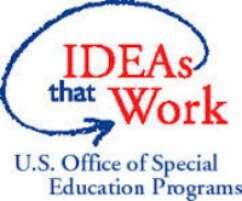Evidence-Based Practices
- Using Published Curriculum to Teach Participation in the IEP Meeting: This document contains information, guidance, and links for these curricula (http://www.transitionta.org/sites/default/files/PD_Published_IEP_2.pdf
- Using the Self-Determination Learning Model of Instruction (SDLMI) to Teach Goal Attainment: This document contains information, guidance, and links for the SDLMI (http://www.transitionta.org/sites/default/files/PD_SDLMI_GoalAttain.pdf ). The direct link to the materials can be found at http://www.beachcenter.org/resource_library/beach_resource_detail_page.a.... You can view an instructional video for the use of the SDLMI created by NTACT (National Technical Assistance Center for Transition) and the University of Kansas Transition Coalition in the Resources section of the ASPIRE website.
Research-Based Practices
- Using the Self-Advocacy Strategy to Teach Student Involvement in the IEP: This document contains information, guidance, and links for this strategy. Lesson plans are also provided. This is a SIM strategy and the direct link to purchase these materials can be found at http://sim.kucrl.org/products/details/self-advocacy-strategy.
- Using the Self-Directed IEP to Teach Student Involvement in the IEP: This document contains information, guidance, and links for Choice Maker Self-Determination Curriculum (http://www.transitionta.org/sites/default/files/PD_SDIEP.pdf). Choice Maker is now a free curriculum. You can access the curriculum at (https://www.ou.edu/content/education/centers-and-partnerships/zarrow/cho...) and the Choice Maker Self-Assessment at (https://www.ou.edu/content/dam/Education/zarrow/ChoiceMaker%20materials/...). These resources are free.
- Using "Whose Future Is It?" to Teach Self-Determination Skills: This document contains information, guidance, and links for the "Whose Future Is It" program. The curriculum can be accessed for free at http://www.ou.edu/education/centers-and-partnerships/zarrow/trasition-ed....
These resources have been harvested from the Effective Practices and Predictors page of the NTACT website.



